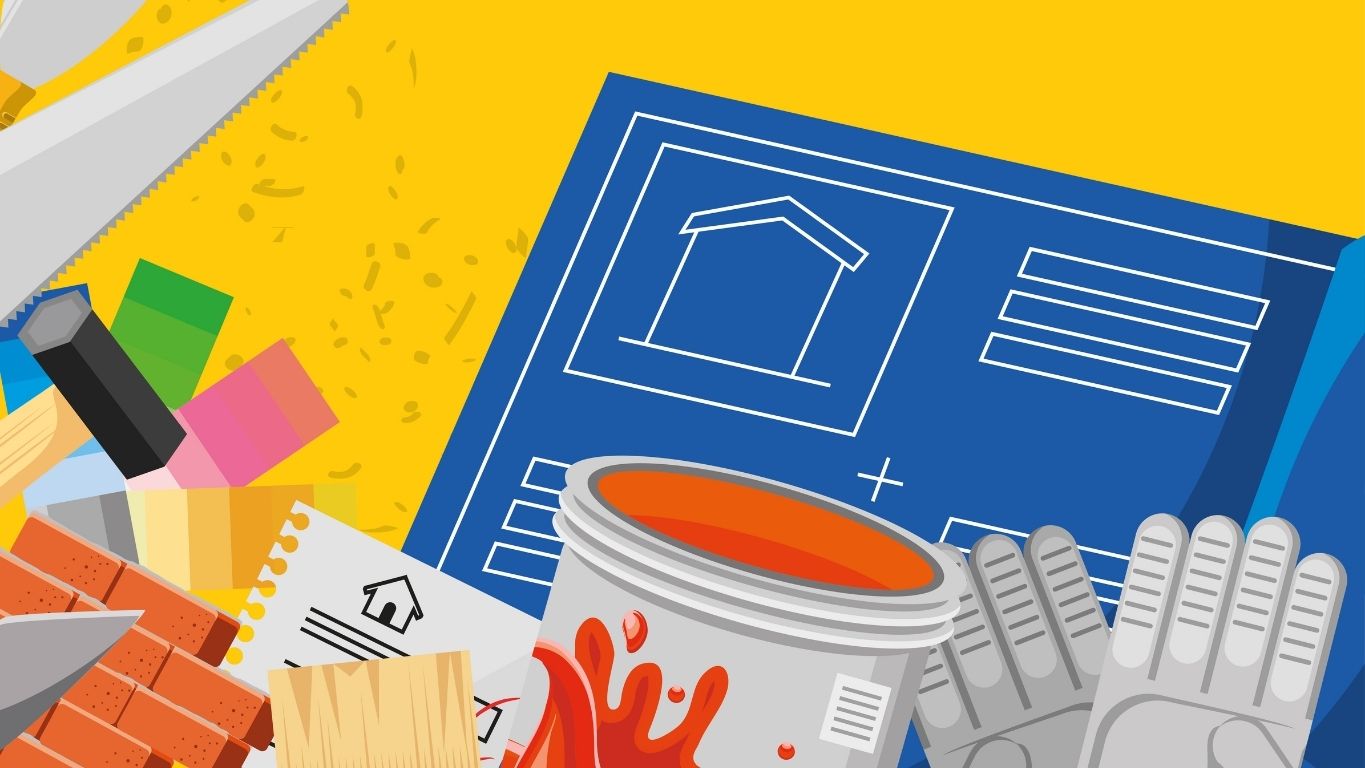Moving is one of life’s biggest events. It’s exciting, chaotic, and full of changes.
Think about your last move, looking at new places and the excitement that comes with it. Imagining yourself living in the place that you’ve had your eye on. Packing up your memories to go make new ones.
I moved recently, and I can tell you that the nerves and excitement were at an all-time high.
But turning your new house into a home involves a lot of purchasing decisions. There are so many things movers want and need, such as a new dining table for making dinnertime memories, finding a new dentist, the closest car wash, signing up for internet, and the list goes on.
Many brands miss the mark by targeting too late, until the move has already happened. Yes, this is important but moving and planning new routines start well before the moving truck shows up.
Pre-move targeting gives you a chance to influence decisions before they’re made.
Why the Purchase Window Opens Before the Move
Movers don’t wait until they unpack to start spending—they plan weeks in advance.
According to Investopia, movers spend close to $20,000 to set up their new homes, including furniture, appliances, home services, and insurance updates. And much of this research and purchase decisions happen well before the move even occurs.
Early brand exposure increases the likelihood of being top-of-mind when decisions are made. Understanding what customers need, and the kinds of purchases they’re likely to make during the pre-move process, allows you to expose them more accurately to products and services they may already be seeking.
Marketing to Movers early Gives your Brand a Distinct Advantage.
It goes without saying that marketing early to movers gives your brand a step over the competition.
Getting your brand out there when the mover is in the early stages of their moving process is vital. According to Welcome Wagon, 85% of new movers use the first business that contacts them. And research by Blue Duck Agency shows that new movers typically have a 3–5-year customer retention period, meaning that when you connect with them early and effectively, they can become loyal customers.
So, engaging with a new mover early can clearly give you a great advantage!
How Early Movers Plan Big-Ticket Purchases
According to Porch Group Media’s mover trend insights, many purchasing decisions are mapped out during the 30–90-day window before the move happens.
In fact, over 72% of movers anticipate or have paid for items BEFORE their move. This represents a massive opportunity for brands to reach consumers before the moving truck shows up.

Movers begin planning their purchases weeks—or even months—in advance. The larger the purchase, the earlier the consideration phase starts. So, connecting early gives brands a major advantage.
For example, a customer moving into a larger home may plan to upgrade their sofa to a spacious sectional and they start shopping well before they’ve even packed a moving box. Getting in front of them as soon as possible, and ahead of your competition is crucial.
Many movers have an early planning mindset, which means it’s no longer sufficient to target movers after a change-of-address signal or post-move registration. By then, the most important decisions have already been made—and budgets already allocated.
Launching campaigns earlier allows marketers to:
- Establish early brand relevance while movers are still gathering ideas and forming preferences
- Introduce helpful content and value-based messaging when trust is easier to earn
- Increase conversion rates by aligning offers to specific needs at each stage of the moving journey
- Avoid wasteful spend on late-stage buyers who have already committed to other brands
An incredible 90% of new movers would be likely to try a new brand for any items/services.
Consumers are open to trying new brands during a move across many categories. For example, here is a sampling of what a new mover will try new brands for:

This is the time to share your brand. Making a lasting impression during a time like the moving process is a fantastic way to get a consumer to remember you and your brand.
Related Article: Movers are without a doubt a valuable audience that every business should be targeting. Explore these 20 must know statistics.
4 Timing Strategies That Boost Engagement and ROI
To make the most of your premover marketing strategies, here are 5 strategies to boost engagement.
1. Segment by Move Stage: Tailor messaging for early researchers vs. last-minute planners.
Not all movers are alike and understanding when to reach them is just as important as what to say.
Some movers are early researchers, planning every detail weeks in advance. Others are last-minute planners, making decisions under pressure as the move date closes in. Your marketing should reflect those differences.
Here’s how you can better tailor your strategy:
- Identify where they are in the journey: Are they still browsing listings, or are they days away from move-in?
Tip: PGM offers mover data across the entire journey, from pre-movers to post-movers so you can adjust your strategy accordingly.
- Time your content: Share tips and inspiration early on, send timely offers or reminders when urgency kicks in.
- Adjust your cadence: Early movers might welcome regular planning resources; last-minute movers need messages with more urgency.
I remember spending a lot of time hunting for furniture before I even had the keys to my new place. I was measuring rooms, bookmarking sofas, and trying to visualize how everything would fit. I wasn’t waiting for moving day, I was planning (and shopping) well in advance. If a brand had reached me then, with personalized suggestions or exclusive “pre-move” offers, I absolutely would’ve taken notice.
2. Omnichannel Touchpoints: Reach movers via email, direct mail, social, CTV, and display.
There are many different ways to reach movers with omnichannel touchpoints. You’ll want to:
- Maintain consistent messaging across all channels.
- Reinforce brand presence where movers spend time (e.g., social, search).
- Increase recall and response rates with a mix of online and offline outreach.
Reaching movers across multiple channels ensures your message sticks. When someone is planning a move, they’re constantly toggling between devices; Googling moving tips on their phone, checking Pinterest for home inspiration, or browsing Facebook Marketplace for gently used furniture. A consistent presence across these spaces helps brands stay top of mind.
When I was preparing for my last move, I followed a local furniture store on Instagram after clicking a Facebook ad. A week later, I received an email with a personalized discount and later saw a Google display ad reminding me of the same couch I had saved on their site. The repetition across channels didn’t feel intrusive—it felt helpful.
That’s the power of omnichannel, done right. When messaging is aligned and well-timed, it doesn’t just drive awareness; it drives action.
3. Offer Value Early: Discounts, guides, checklists, or early-access offers build trust.
Offering value early is an advantage that shouldn’t be underestimated.
Here are some tips for how to do this:
- Provide practical tools: checklists, neighborhood guides, and moving tips.
- Incentivize early engagement with special discounts or bonuses.
- Establish your brand as a helpful partner, not just a seller.
Offering value early isn’t just about goodwill; it’s a strategic move. It lays the groundwork for long-term brand loyalty and higher customer lifetime value.
When I was shopping for a new internet service, one provider offered me early sign-up discounts, and a personalized estimate of my monthly bill based on my streaming and gaming habits. Getting personalized info and upfront savings made me more confident to commit early.
We shouldn’t underestimate how much practical value, and early incentives can sway customer decisions, especially during high-stress times, like moving.
4. Test & Optimize: Adjust timing windows based on response data and vertical.
Testing and optimizing is something that we do for everything. Here’s how we can put it into practice:
- Analyze open, click, and conversion rates by timing and channel.
- A/B test send dates, times, and frequency.
- Adapt timing strategies for different industries (e.g., home services vs. retail).
Testing and optimization are not just operational tasks; they’re strategic levers. Fine-tuning timing can dramatically increase ROI by ensuring marketing efforts hit when audiences are most receptive. It also helps maximize budget efficiency, reduce waste, and gain a competitive edge.
As marketers, it’s critical to recognize that even small shifts in timing can have a significant impact on results, and that these insights often come only through ongoing testing and optimization.
Conclusion
Timing can be the difference between being the brand they choose, or the one they scroll past.
Want to reach movers before your competitors do?
Let us show you how our pre-mover data can drive better engagement and more conversions.




